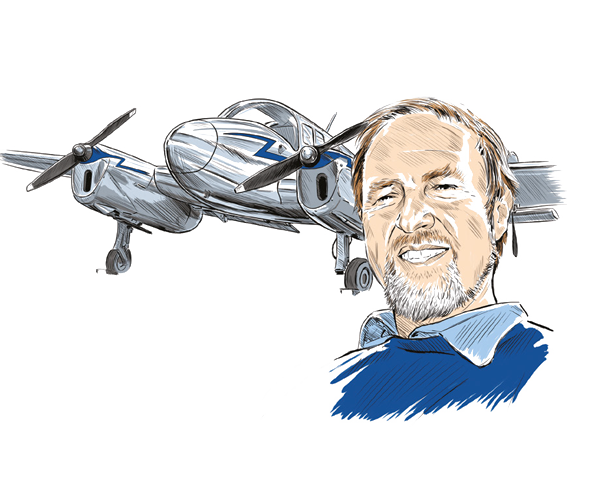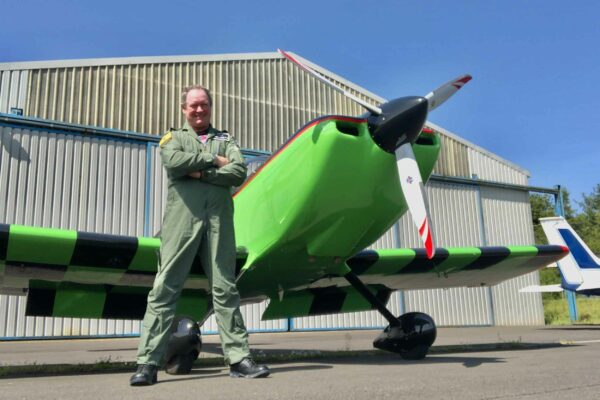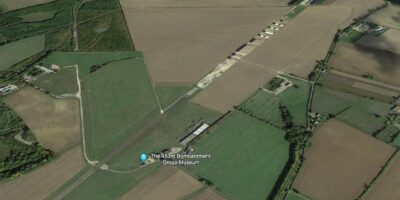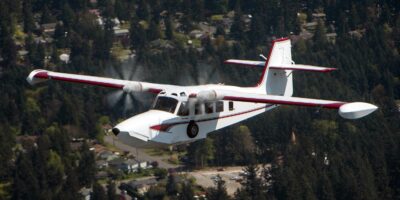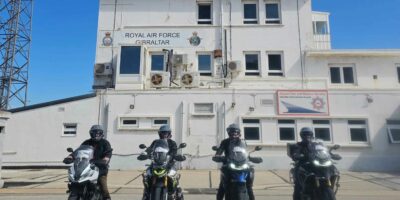In the glory days of the 1930s when anything in aviation seemed possible, light twins were relatively commonplace. In 1932, General Aircraft of Croydon offered its Monospar, a low-winged cabin monoplane powered by a pair of 90hp Pobjoy seven-cylinder radials. About 45 were built. A year later, Short Brothers of Belfast introduced the Scion, a high-winged six-seater, similarly powered by a pair of Pobjoys. It was offered in both land and seaplane versions – and it was also reasonably successful – although all but two of the 22 built featured wheels. There was also de Havilland’s Dragonfly cabin biplane, powered by two Gipsy Majors, which proved the most successful of the lot with 67 built between 1936 and 1938. It was intended, like all of them, to be an executive transport, and if four narrow-chord tapered wings look so elegantly vintage now, it was probably more traditional then. The Dragonfly was expensive at the time, and apparently difficult to handle on the ground, which it probably still is… The Miles Gemini, which came immediately post-war, was probably the last of a breed, a four-seat wooden cabin monoplane powered by a pair of 100hp Blackburn Cirrus Minors, and owed more to the Monospar and Scion than the Dragonfly, but it was quite successful despite its vintage construction and features. One hundred and seventy were sold between 1946 and 1947 and Miles would certainly have sold more had the company stayed in business.
“…powered initially by four Continental C-85 engine flat fours”
The pre-war Dragonfly’s success as an air taxi had already prompted Short Brothers to create a larger four-engined Senior version of the Scion, powered by a quartet of 90hp Pobjoy Niagara radials, and it seemed like a logical thing to do. Distribute more lightweight power units about the airframe rather than try and accommodate a single larger and heavier one. The Pobjoy was an ideal option because it was compact and extremely light (130lb/59kg, or about the same as a Rotax 912), displacing only 2.5 litres but spinning at 3,200rpm and driving the propeller via a reduction gearbox rather like you’ll find on a current Rotax. It gave the installation an odd look because the propeller thrust line was higher than the ring of cylinders, but Shorts was hoping the security offered to the Senior’s nine occupants by four of them would offer an advantage over de Havilland’s Dragon Rapide – the larger version of the Dragonfly. The Scion Senior didn’t find favour here though, instead selling in small numbers as a floatplane in remote parts of the world, presumably where the extra engines might be an attractive feature.
General Aircraft and Airspeed of York, both built long-range patrol prototypes in 1939/40 each powered by four Pobjoys but neither aircraft was successful, while Saunders-Roe built the Shrimp in 1939, which was effectively a half-sized Sunderland, powered by four of the ever-popular Pobjoy Niagaras. It survived as a test bed until 1949, but remained the only one built.
Now, I’m sure someone will correct me but the only other aircraft I can find powered by four 100hp-ish engines was the Monsted-Vincent MV-1 Starflight, a comparatively large (48ft span) all-metal high-wing monoplane built in Louisiana in1946. It was powered initially by four Continental C-85 engine flat fours (familiar to most of us) mounted on the wing’s trailing edge, swinging two-position Sensenich metal propellers. It sounds wacky but former WWII aviators, The Colonels H Farley Vincent and Robert M Monsted whose brainchild it was, had given considerable thought to the layout and the role for which it was intended. The high-wing allowed short, rearwards-retractable landing gear, the weight distribution of the pusher engines moved the cabin forward of the wing to reduce noise, the huge fin meant there was no Vmc, and it could fly on two engines – even if they were on one wing – each of them equipped with a shaft-driven fan to eliminate overheating while taxying, and fuel injection to rule out carburettor icing.
The C-85s were soon replaced by 100hp O-200s which are yet more familiar (not to mention largely unchanged 75 years on) and which gave the MV-1 a cruise of 150mph and a stall at 57. This, plus a range of eight hours (there was a potty in case that was utilised…), and a payload of 1,800lb. It looked good and offered a lot of features which weren’t available at the time and despite its lack of convention, it didn’t appear to have any nasty handling quirks. Sadly – and not for the first time – the prototype was damaged in a landing accident which made the investors nervous while at the same time, sales efforts were skewered by the sudden availability of war surplus aircraft like the Beech 18 light twin. Not quite the same thing but would do a similar job albeit with a higher fuel burn and was probably less than half the price to buy.
The small multi-engine theme didn’t really develop in the years that followed – not until rows of electric motors began to appear on the wings of electric prototypes. That might have to do with the subsequent proven reliability of 200-plus hp engines which meant that two would do for most roles. There’s also the cost of overhauling four common or garden O-200s which, done in modern times, currently stands close to an eye-watering £100,000. So, it’s also to do with economics. Again…
Working vintage aircraft and cars make Mark particularly happy.
[email protected]


